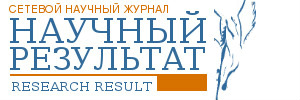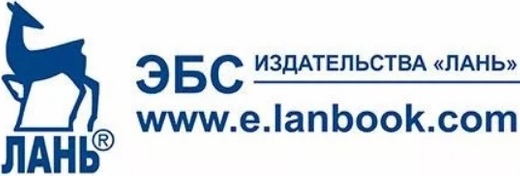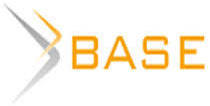Communicative approach in departmental foreign language teaching
Aннотация
Introduction. The relevance of foreign language proficiency in the current context of departmental work is due to several key factors, such as international cooperation, information security, professional development and increased competition. A communicative approach to foreign language training in departments has significant advantages and contributes to improving the efficiency of the learning process. Research goal. To identify the fundamental principles and features of the communicative approach that promote the efficiency of foreign language training within departmental education. Methodology and methods. The research was conducted using a comprehensive approach that included historical, theoretical-methodological and comparative methods. The following strategies were employed to achieve the research goal: the stages of formation and development of the communicative approach in the methodology of foreign language teaching were examined since the mid-twentieth century; an analysis of existing studies and publications by Russian and foreign researchers was conducted to identify the key characteristics and principles of the communicative method, and to determine how these could be adapted to the conditions of departmental educational organisations. Results. The study provides historical background for the emergence of the communicative approach in Russia and abroad. It was revealed that the fundamental principle of the communicative approach is the emphasis on live communication, the creation of conditions for the natural expression of thoughts and emotions, the active inclusion of cadets in the communication situation, and the modeling of life situations. The methodology involves making educational materials and tasks as relevant to everyday life as possible, encouraging oral practice and motivating students to independently formulate their own statements. The article identifies the specific features of teaching foreign languages to cadets in departmental educational organizations, which are determined by the following factors: specialized training; limited freedom to choose materials; the need for quick results; a high degree of responsibility and discipline; political, ideological, and socio-psychological constraints, etc. The study provides examples of role-playing games, discussions, project assignments and multimedia resources that can be used in foreign language classes at departmental educational organizations. Conclusion. The communicative approach, which uses communicative methods, is widely used in many countries around the world, including Russia, and is recognised as one of the most effective ways to learn foreign languages in educational organisations. The main feature of adapting the communicative method is to preserve the general principles of the methodology and modify them to suit the needs of a specific category of students – cadets.
Ключевые слова: departmental education, communicative approach, communicative methods, foreign language, professionally oriented training, cadets
- stages of formation and development of the communicative approach in the methodology of foreign language teaching were examined since the mid-twentieth century. Special attention was given to the influence of works by British scholars D. Wilkins, J. Holmes and American educators H.A. Johnson, who laid the foundation for modern teaching approaches;
- an analysis of existing studies and publications by Russian researchers N.D. Galskova, E.I. Passov, A.N. Schukin and others was conducted, enabling identification of key characteristics and principles of the communicative method and their adaptation to the conditions of departmental educational organizations;
- models and approaches to foreign language teaching were analyzed in different countries, which allowed determining the most effective practices applicable in the Russian departmental educational space.
- David A. Wilkins, a British linguist, the author of the concept of the functional aspect of language and the theory of communicative competence (early 70s). It was he who first proposed to classify the content of foreign language teaching based on the needs of real communication, highlighting the functional aspects of language (for example, greeting, farewell, expressing agreement and disagreement, etc.) (Wilkins, 1972).
- J.N. Holmes, an Australian researcher who developed the theory of speech analysis and conversational formats, emphasizing the importance of the ability to engage in dialogue and navigate real-life communication situations (Holmes, 1988)
- H.A. Jobson, an American educator who emphasized the need for a practical approach in teaching foreign languages.
- E.I. Passov, who developed an original model of a communicative lesson that includes a series of stages related to preparation, the main stage and reflection (Kolobkova, 2019);
- A.N. Shchukin, who created a classification of methods for teaching foreign languages, which became the basis for systematizing the pedagogical experience of Russian teachers (Shchukin, 2022);
- N.D. Galskova, a specialist in the methodology of teaching foreign languages, who has made significant contributions to the development of a scientifically based approach to teaching foreign languages.
- focusing on genuine communication with a purposeful intent;
- studying language in real-life and professional context;
- engaging students in meaningful social interactions.
- classification of speech acts (requests, statements, objections, etc.);
- understanding and reproduction of typical communication formulas;
- focus on specific communicative goals of each lesson.
- to learning new material in the context of a specific life situation;
- to increasing confidence;
- to forming stable associations between words and situations.
- transition from the traditional form of presentation of the material (“grammar plus dictionary”) towards the thematic construction of lessons focused on solving communicative tasks;
- focus on developing practical skills in speaking, listening, reading and writing;
- changing the teacher's role from a traditional lecturer and supervisor to a mentor who coordinates group work and creates an atmosphere of free exchange of ideas.
- Specialized training. Cadets of departmental educational organizations receive specialized training, whether it is military service, law enforcement, or protection of state secrets. Consequently, the educational material should contain specialized vocabulary and terminology that corresponds to the profession. This means that a significant portion of the lessons is dedicated to professional language.
- Limited freedom to choose the material. Unlike traditional civilian universities, the curriculum for cadets is regulated by the department's regulations and orders strictly. This imposes limitations on the choice of educational materials and methods. Teachers are required to follow the approved programs and plans, which often dictate the scope and content of the curriculum.
- The need for quick results. Cadets undergo intensive professional training within a strict timeframe. Foreign languages are most often studied in parallel with the main curriculum, and teachers face the challenge of providing as much useful material as possible in a short period. As a result, the focus is on key elements necessary for quick communication in standard work situations.
- High degree of responsibility and discipline. The special psychological and physical demands of military and law enforcement professions have a significant impact on the readiness for learning. Cadets have to combine physical training, service, and study, which increases stress and reduces overall concentration. Teachers need to consider this factor by creating a flexible and supportive learning environment.
- Political and ideological framework. Teaching foreign languages in departmental organizations is often associated with ensuring information security and maintaining confidentiality. Students undergo special checks, and some courses may be closed, which significantly limits the amount of information used and the availability of external resources.
- Social and psychological environment. The social and psychological climate of military and departmental organizations is characterized by a high level of hierarchy, collectivism and obedience to the authority of senior officers. This environment affects the relationships within the training group, sometimes leading to problems with leadership and psychological stability among team members.
- Lack of autonomy and independence. One of the challenges in teaching foreign languages to cadets is the lack of sufficient independent learning activities. Students are often under constant supervision and follow a strict daily schedule, which limits their ability to engage in extracurricular activities or plan their own learning.
- course specialization (Training is conducted using specially selected educational materials that contain terminology and practical knowledge necessary for the graduate's professional activities.);
- integration of theory and practice (Much attention is paid to conducting laboratory work, practical classes, and field trips, which allow students to apply their knowledge in real-world situations.);
- individual support (Teachers provide individualized attention to each student, taking into account their personal characteristics and interests.);
- emphasis on patriotic education (Special attention is paid to the formation of students’ sense of pride in their profession and country, the education of respect for laws and rules of conduct.).
- Role-playing games called “Negotiations with a representative of a foreign delegation”. Participants take on the roles of a diplomat, a representative of a government agency, and a translator. The goal is to conduct successful negotiations.
- Discussions, such as “Issues of Interethnic Relations in the Region”. Students are encouraged to discuss possible scenarios for resolving conflicts, utilizing their acquired argumentation and persuasion skills. The purpose of this technique is to develop critical thinking, the ability to defend one's point of view constructively and find compromise solutions.
- Project tasks, such as “Optimizing the Internal Security System of a Facility”. The group is divided into teams and each team develops its own project that represents a strategy for securing the facility.
- Multimedia content, such as watching documentaries and interviews, accompanied by text comprehension tasks and subsequent discussions about the content.
- Interactive lectures, for example, a teacher gives a lecture accompanied by questions for the audience. Each participant is assigned to prepare a report on a specific topic and present it to the group. Interactive lectures increase student engagement, allow for deeper understanding of the material and assess the level of comprehension of each individual topic.
- Technical simulators, such as the use of computer simulators and virtual simulators for practicing emergency scenarios. These devices provide a realistic representation of real-world processes and allow for repeated training sessions. Technical simulators enable safe training exercises and help monitor the quality of acquired skills.
- “Border Zone Control”. The game takes the form of a border checkpoint scenario. One participant acts as a border officer checking documents, while the other plays the role of a tourist or a merchant. The task is complicated further by additional circumstances (suspicious luggage, unclear markings on documents);
- “Evacuation of Victims”. Participants are divided into rescuers and victims. The objective is to evacuate the victims from a dangerous area while adhering to first aid and resource management rules;
- “Meeting with a Journalist”. One student plays the role of a journalist asking pointed questions to a government official about a specific incident. The second student answers the questions while adhering to the established guidelines and rules for interacting with the media;
- “Legislation and Citizens' Rights”. Organizing a debate on the legal regulation of citizens' relationships with the government. Each side presents arguments and counterarguments, demonstrating a deep understanding of the legislation and the social consequences of decisions;
- “Internal Document Management System”. Description: Develop a regulation for processing and storing confidential documents. The project should include procedures for registering, transferring and destroying documents, as well as recommendations for preventing information leaks;
- “Anti-Corruption”. Creation of the unit's anti-corruption policy program. The work includes conducting an analysis of corruption risks, developing proposals to eliminate negative factors and evaluating the effectiveness of planned measures.
- Documentaries about emergencies, such as a documentary about the aftermath of accidents and disasters that provides a visual demonstration of the correct sequence of actions for department employees;
- Interviews with national security experts, such as recordings of interviews with departmental service managers, who talk about the specifics of their work, achievements and challenges;
- Emergency simulations, such as computer-based simulations of personnel evacuations, firefighting and the response to natural disasters and industrial accidents.
- Increasing the level of language proficiency. Research shows that students who participate in communicative forms of learning achieve higher levels of language proficiency compared to those who practice the traditional method. The level of proficiency is measured by such indicators as fluency of speech, accuracy of use of grammatical constructions, richness of vocabulary and correct pronunciation.
- Increase motivation. Communicative methods involve students' active participation in the learning process, which enhances their intrinsic motivation. Students begin to recognize the significance of the material they are studying and experience personal success because of their achievements. This effect is reflected in increased class attendance, completion of additional assignments and a greater understanding of the culture of the target country.
- Simplifying the understanding of the language. Through constant exposure to the language in real-life situations, students learn to use language structures and mechanisms more quickly. Games, role-playing and discussions help to speed up this process, turning abstract knowledge into practical skills.
- Improving self-esteem. Students who learn through communicative methods feel more confident in themselves and their language skills. They find it easier to speak in public, discuss issues and convey their thoughts clearly and accurately.
- The sustainability of results. Research confirms that the results achieved through communicative methods are more durable and better transfer to the real world. This is because these methods create strong associations between knowledge and real-life situations, which helps to retain information over time. Therefore, the numerous scientific publications that support the effectiveness of communicative methods support the validity of this hypothesis and the need to expand their use in the educational process.
- Digitalization and digital support of the educational process. Wide-ranging automation and the introduction of digital technologies will improve the monitoring of academic performance, individualize the educational process and facilitate the interaction between teachers and students. This includes the use of online resources, interactive whiteboards, electronic libraries and automated knowledge assessment systems;
- Comprehensive professional education. It is necessary to combine basic military and specialized professions with the humanities to ensure the comprehensive development of the cadet's personality. This will enable the cadet to become a highly skilled professional who is prepared to act in any circumstances;
- Development of meta-skills and creativity. Special attention should be paid to the formation of universal skills, such as critical thinking, time management, self-reflection and teamwork. This will ensure that future employees are mobile and able to adapt to changing conditions.
- Continuous updating of educational programs. Educational programs should be constantly revised and updated with new materials and teaching methods that meet the demands of the time and scientific discoveries. It is important to strike a balance between the fundamental and applied aspects of education.
- Broad international exchange of experience. Active cooperation with leading universities and institutes of other countries will allow us to introduce innovative approaches and the best global practices into the Russian educational process. Joint projects, foreign internships and conferences will become an important part of educational activities (Kourova, Mikhanova, 2015).
- Mentoring and curatorial support. The development of the mentoring institute and the introduction of personal support for students will become an important element of support and motivation for cadets. Individual attention from experienced teachers will help each cadet to realize their potential and achieve success.

















Список литературы
Azimova, S. (2019), “The communicative approach in English language teaching”, Bulletin of Science and Practice, 5 (4), 471-475. DOI: 10.33619/2414-2948/41/70. (In Russian).
Coy, M.N. (2009), “Practical approaches to foreign language teaching and learning”, Peter lang Group AG, Frankfurt am Main, available at: https://www.peterlang.com/document/1105901. (In German).
Holmes, J.N. (1988), “Speech synthesis and recognition”, Van Nostrand Reinhold, London. (In UK).
Isakov, A.A. and Isakova, A.A. (2019), “Contextual approach in developing communicative competence in foreign language lessons at university”, European Proceedings of Social and Behavioral Sciences, 78, 332-341. https://doi.org/10.15405/epsbs.2020.01.39. (In Russian).
Jedlicka, J.S., Brown, S.W., Bunch, A.E. and Jaffe L.I. (2002), “A comparison of distance education instructional methods in occupational therapy”, J. of Allied Health, 31(4), 247-251. (In USA).
Kolobkova, A.A. (2019), “About the pedagogical legacy of E.I. Passov”, Pedagogical journal, 9 (6), 367-375. (In Russian).
Kourova, A.V. and Mikhanova, O.P. (2015), “International educational exchange programs: a brief historical overview”, News of Higher Educational Institutions, 4 (36), 165-175. (In Russian).
Lomteva, T.N. and Reshetova, I.N. (2012), “The history of the development of a communicative approach in the domestic methodology of teaching foreign languages”, Bulletin of the State University of Foreign Languages, 2, 291-294. (In Russian).
Tretyakova, G.V., Chernyishkova, N.V. and Rosaria Filone, R. (2021), “Foreign internships as a factor of foreign language teachers”, Professional Development, 14 (33), 1-15. https://doi.org/10.20952/revtee.v14i33.15125. (In Russian).
Soliyev, A.A. (2020), “Relevance of foreign language proficiency in the modern world”, World science, 5 (38), 94-96. (In Uzbekistan).
Shalimova, O.N. (2024), “Methods of foreign language teaching in educational organizations of the Ministry of Internal Affairs of Russia”, Trends in the development of science and education, 114 (2), 75-77. (In Russian).
Shchukin, A.N. (2013), “The content of the term “methodology” in the context of modern linguodidactics”, Foreign Languages at School, 1, 3-11. (In Russian).
Wilkins, D.A. (1972), Linguistic in language teaching, Great Britain, available at: https://rrpedagogy.ru/info/authors/p_rules/. (In UK).
Zydziunaite, V, Kaminskiene, L, Jurgile, V and Jezukeviciene, E. (2022), “Learning to Learn' Characteristics in Educational Interactions between Teacher and Student in the Classroom”, European Journal of Contemporary Education, 11 (1), 213-240. DOI: 10.13187/ejced.2022.1.213. (In Lithuania).